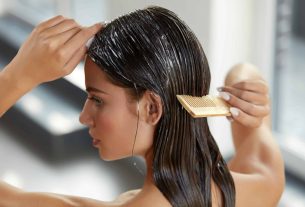The plasma jet is an aesthetic treatment that can be used to treat wrinkles, expression lines, dark spots, scars and stretch marks, as it promotes the production of collagen and elastic fibers, reduces keloids and also facilitates the entry of active ingredients into the skin. .
Plasma jet treatment can be done every 15-30 days, according to the dermatologist’s guidance. Each session lasts around 20 minutes and the results can be seen in the first treatment session.
In the 24 hours after the plasma jet sessions, it is recommended to use sunscreen with at least SPF 30, to protect the skin from the harmful effects of the sun. Furthermore, it may be necessary to use a specific cream or ointment to aid healing, which will be recommended by the professional performing the technique.

What is it for
The plasma jet is an aesthetic procedure that can be used to:
- Smooth wrinkles and expression lines;
- Lighten spots on the face and body caused by the sun;
- Treat dark circles;
- Raise the eyelids;
- Treat white or red stretch marks;
- Combat sagging;
- Soften scars;
- Promote facial rejuvenation.
Furthermore, the plasma jet can be performed by a dermatologist with the aim of treating small warts, with the exception of genital and plantar warts, or to lighten tattoos.
How it works
Plasma is considered the fourth state of matter, in which electrons separate from atoms, producing an ionized gas. This gas activates the regeneration and healing process, stimulates the immune system and facilitates collagen production, contributing to a better overall appearance of the skin.
Furthermore, plasma also opens the ion channels of dermal cells, which allows for greater hydration and firmer skin.
Does the plasma jet hurt?
Plasma jet treatment may cause some pain or discomfort. Therefore, it is common to use an anesthetic gel before the procedure.
Care after plasma jet
After treatment, the person may feel a burning sensation, which should last for a few hours. The professional can apply a product that soothes and helps regenerate the treated area and recommend using it for more days, in addition to the use of sunscreen. If the treatment is carried out with the aim of rejuvenation, the person must use a specific cream for treatment at home.
When it is not indicated
Plasma jet treatment should not be carried out on people who use a cardiac pacemaker, who suffer from epilepsy, during pregnancy, in case of cancer or who have metal implants in the body, or who use photosensitizing medications, as is the case of isotretinoin, for example.
Bibliography
- TSIOUMAS G., Sotiris et al. A Descriptive Study on the Applications of Plasma Exeresis in Dermatology. J Clin Aesthet Dermatol.. 14. 3; p. 58–62, 2021
- POURAZIZI, Mohsen, ABTAHI-NAEINI, Bahareh. Plasma application in aesthetic medicine: Clinical and physical aspects. Journal of Surgical Dermatology. 2017

Sign up for our newsletter and stay up to date with exclusive news
that can transform your routine!
Warning: Undefined array key "title" in /home/storelat/public_html/wp-content/plugins/link-whisper-premium/templates/frontend/related-posts.php on line 12
Warning: Undefined array key "title_tag" in /home/storelat/public_html/wp-content/plugins/link-whisper-premium/templates/frontend/related-posts.php on line 13




